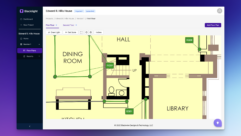

The End of AV Design?
Want to know how AV consulting and integration might evolve? Take a look at other professions such as IT and networking. What clues do they hold?
Thom Mullins
One of the obvious advantages of working in a multidisciplinary engineering firm like mine is the opportunity to work with people outside my own field of expertise. Not only can I learn new things that might help me in my current job, but I can gain insight into the evolution of a separate but similar industry and how it might translate to the AV world. Recently, I was getting to know a colleague from the IT industry. We were discussing how he got where he was and it took me back to a time when I first started considering a dilemma that could potentially impact my field.
Several years ago, I attended an Audio Engineering Society session that featured an interview with one of the principals of Bolt, Beranek & Newman, now known as BBN Technologies, which started out as an acoustical consulting company and evolved into a high-tech firm and U.S. defense contractor. During the interview, this gentleman told the story of how he became involved with BBN and the type of work it does. At the time, the interview was an eye-opener for me. I had not realized that BBN, among other things, was responsible for developing packet-based switching, which is the basis for communications on the Internet. It got me thinking.
One question that’s always bugged me is, why isn’t there a bigger market for network design services as a distinct discipline? It seems that Cisco and friends have had a lock on that part of the industry for a while, leaving only cable plant layout and design as a viable consulting practice (and a commodity, at that).
Since the networking “rules” that BBN and others established have long been understood and undergo very little change (except when a new category of UTP becomes available), the only thing that distinguishes network designers is the level and quality of customer service they provide. Everything else has become just a box of parts that’s delivered to the job site. And that includes the boxes that fit into racks and do the real work.
Today, most of network design is performed by network architects from large switch manufacturers and other big companies. A specialty firm might get the chance to design a small network from time to time, but not often. And even then, they rely heavily on the manufacturers themselves to provide knowledge and recommendations.
When the colleague I mentioned earlier started out in the IT industry, he was attending college and working for his father during the summer. At that time, his father’s firm did cable plant and network design, and they were making money hand over fist. Then Cisco and friends, encouraged by larger businesses, took over network design and began to sell directly to end users. There were good reasons for this move. As equipment and software became more complex, the manufacturer could provide better technical support at a better price. There’s a lot more to the process than terminating a UTP cable and connecting it to a switch and a server. Hard to believe, but true.
Overnight, my colleague’s father’s company saw its income drop from many millions a year to a few million. Eventually, it closed its doors and this colleague went to work for other cable plant installation firms. Then he ended up in consulting. Manufacturers had seen an opportunity to work directly with clients, increase their bottom line, and improve quality by going around the integrator and taking over the design themselves.
Same for AV?
Could that happen in the AV world? Will we succumb to market forces that have haunted the electrical engineering and IT design worlds for years? After all, some aspects of AV consulting work are becoming more commoditized. In addition, as manufacturers respond to requests for systems that are simpler to install and operate, more of the design work is being handled by integrators and end users.
But that phenomenon appears to be driven only by a search for the lowest cost, not necessarily by an accompanying desire for quality or a high level of service. To the contrary: Most of those installations use equipment that tends to have a shorter lifetime, tied to the technology upgrade cycles of, for example, school districts.
What’s more, there are still too many manufacturers playing in the AV market to obviate the need for good third-party design. We don’t have (and I doubt we ever will have) one or two manufacturers spanning the entire industry that could set standards for all of AV. There is no Cisco or Hewlett-Packard. Granted, we have seen manufacturers take on more and more lines of AV equipment in order to increase market share, but none of them has been able to lock up the market, despite their best efforts.
No, I think we’ll continue to see the AV industry grow and mature. After all, although what we do is driven predominantly by electrons and photons, our systems exploit different facets of the laws of physics–facets so diverse in their application that it would be almost impossible to bring them all under a single umbrella.
Certainly we will see some consolidation in communication and control protocols as the network extends its tentacles and we find new uses for transporting signals over UTP. But really, that network still connects to a device that manipulates audio or video signals, or creates light or sound, or invites someone to touch a button. Where a network and its hardware manipulate and route signals to support communications, AV systems operate at a more fundamental level of human interaction that will continue to require our intimate involvement with manufacturers and end users to integrate these technologies into their lives and companies.
We still have a long way to go before AV design is endangered. Max Headroom’s dystopian vision of a TV in every hand and flophouse may be fast approaching, but people still long for a level of interaction with one another that requires our services and expertiseand will for a long time.










